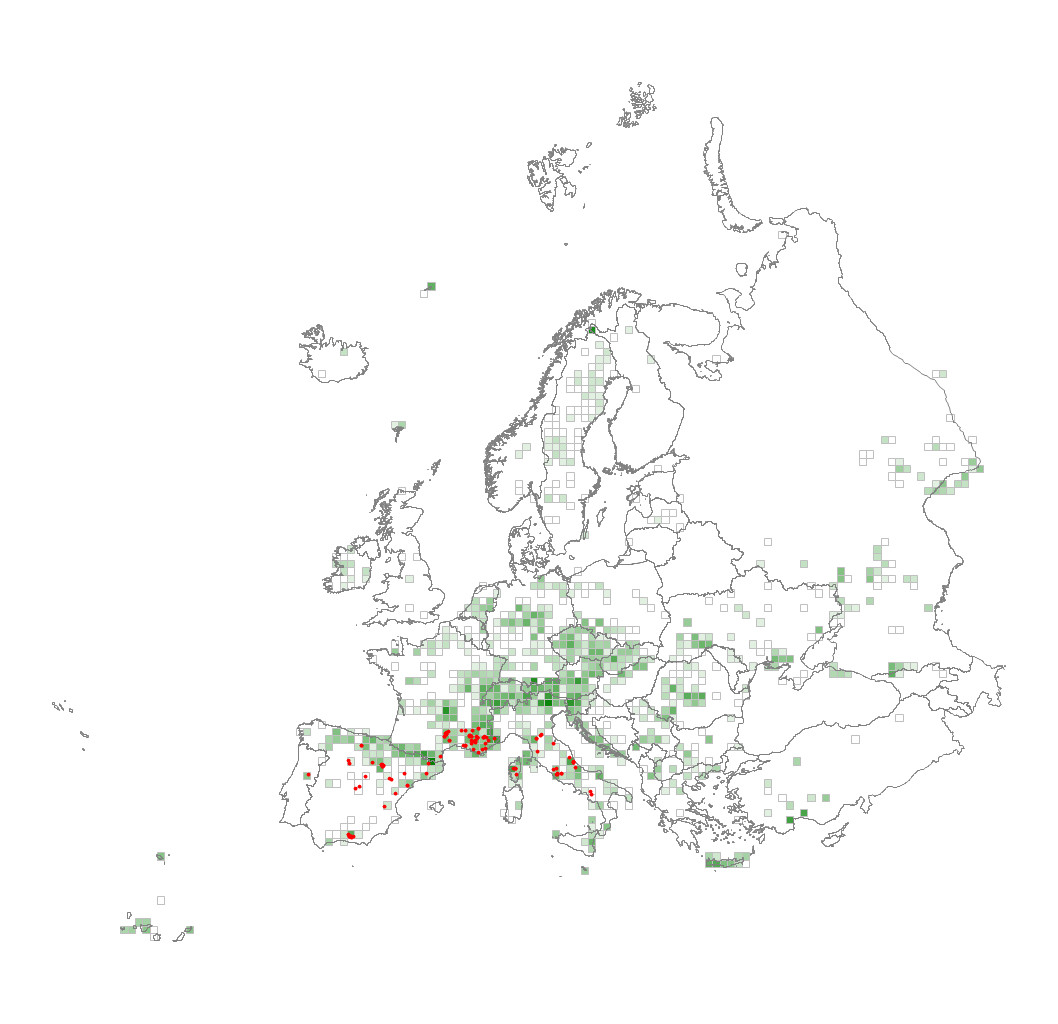U28 Western Mediterranean base-rich scree
Calcareous and ultrabasic scree, with boulders, rock debris and riverine gravel derived from sedimentary and metamorphic rocks, ultramafics and basic volcanics occurring through the western Mediterranean, from lowlands to the high mountains. Epilithic lichens and bryophytes may be very diverse, particularly in the mountains, where they are mostly found in crevices and other shady and humid microsites of immobile boulders. The vascular plant vegetation comprises hemicryptophytes and chamaephytes adapted to the mechanical disturbance caused by mobile screes, shortages in water supply and lack of fine-grained soil. The habitat becomes scarcer and more scattered to the foothills and lowlands and more prone to be affected by human disturbances, such as quarrying and infrastructure development but high mountain screes are usually well preserved and therefore in a very natural state.
Chytrý M., Tichý L., Hennekens S.M., Knollová I., Janssen J.A.M., Rodwell J.S. … Schaminée J.H.J. (2020) EUNIS Habitat Classification: expert system, characteristic species combinations and distribution maps of European habitats. Applied Vegetation Science 23: 648–675. https://doi.org/10.1111/avsc.12519
Version 2025-10-03, https://doi.org/10.5281/zenodo.16895007.
For the official presentation of the EUNIS Habitat Classification from the European Environment Agency, please see: EUNIS Terrestrial Habitat Classification 2021. The FloraVeg.EU presentation may show modifications and partial updates to the habitat classification.
